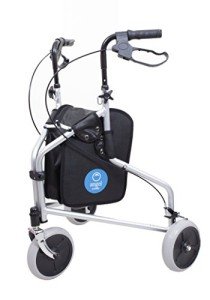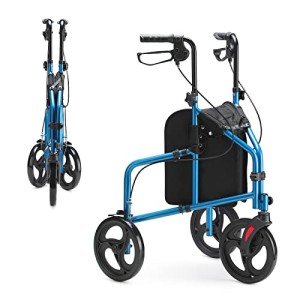There Are A Few Reasons That People Can Succeed With The Mobility Aid …
페이지 정보

본문
Understanding Mobility Aids: Enhancing Independence and Quality of Life
Mobility aids are vital tools that help people with physical disabilities or conditions that hinder their capability to move easily. These aids not only promote self-reliance and boost lifestyle but also offer safety and support for users in various environments. The landscape of mobility aids is broad, encompassing a range of gadgets customized to meet individual requirements. This post intends to explore the different types of mobility aids, their benefits, considerations for use, and frequently asked questions.
Kinds Of Mobility Aids
Mobility aids can be categorized into numerous major types, each developed to assist in specific ways. Below is a table summarizing the most common mobility aids:
| Type of Mobility Aid | Description | Suitable Use Case |
|---|---|---|
| Wheelchairs | A chair mounted on wheels utilized by those unable to stroll. | Long-lasting special needs or severe mobility issues. |
| Walkers | A frame that provides assistance for individuals while walking. | Post-surgery healing or balance issues. |
| Canes | A stick utilized for balance and assistance while walking. | Mild mobility issues or as a preventive step. |
| Rollators | A Four-wheel walker equipped with wheels and often a seat. | Individuals requiring assistance over longer distances. |
| Crutches | Devices used to raise and support the body weight of an individual with a leg injury. | Short-lived injuries needing non-weight bearing. |
| Scooters | A motorized gadget for those who can sit but not walk cross countries. | Long outings and fatigue-prone people. |
| Raise Chairs | Recliner chairs that raise to assist users in standing up. | Elderly people or those with extreme discomfort. |
Benefits of Mobility Aids
Making use of mobility aids extends beyond simple transportation; they serve a number of important functions in improving the well-being of users:

- Independence: Mobility aids empower users to carry out everyday activities without relying greatly on caretakers or assistance from others.
- Safety: Many mobility aids are designed to reduce the risk of falls, supplying users with stability when moving.
- Improved Quality of Life: By improving mobility, people can engage in social activities, workout, and keep community connections, favorably impacting their mental health.
- Access to Environments: Mobility aids can assist in access to locations that might otherwise be challenging to browse, such as public transportation and public spaces.
- Support Recovery: They play a crucial function in rehabilitation following surgical treatment or injury by promoting steady mobility and aiding recovery.
Considerations for Choosing the Right Mobility Aid
Choosing the proper mobility aid can substantially influence a person's quality of life. Here are numerous key considerations to keep in mind:

- Level of Mobility Impairment: Assess the seriousness of mobility concerns to determine the most suitable type of aid.
- User's Physical Condition: Consider factors like weight, strength, and general health.
- User's Lifestyle and Environment: Analyze where the mobility aid will be utilized usually: indoors, outdoors, or both.
- Practical Needs: Evaluate if extra features such as storage, seating, or height adjustments are necessary.
- Assessment with Professionals: Always consult from health care experts for guidance tailored to individual circumstances.
Regularly Asked Questions (FAQs)
Q1: What is the difference between a walker and a rollator?A1: A walker is a simple frameutilized for assistance and balance, while a rollator has wheels, offering simpler mobility and typically comes with extra functions such as a seat and storage. Q2: Can mobility aids be covered by insurance?A2:
Many health insurance plans, consisting of Medicare, might cover mobility aids if they are considered medically necessary. It is recommended to consult with your insurance supplier for particular information. Q3: How do I understand when it's time to use a mobility aid?A3: If you've experienced regular falls, persistent discomfort
while walking, or have trouble finishing everyday activities
, it may be time to consider a mobility aid. Seek advice from a health care specialist for tailored advice. Q4: Are there mobility aids developed for outdoor use?A4: Yes, lots of mobility aids are particularly created for outdoor environments, consisting of scooters, outdoor walkers, and all-terrain wheelchairs, equipped to handle numerous terrains. Q5: Can I use a mobility aid after surgery, like knee replacement?A5: Yes, mobility aids such as walkers and crutches are frequently advised post-surgery to aid healing and maintain safety as you restore
strength. Mobility aids play a vital role in supporting individuals with mobilityobstacles, helping with independence, and boosting general quality of life. With a varied variety of options available, it's vital for users to evaluate their unique requirements and consult with experts to choose the most proper aid. As innovation and design continue to evolve, these aids will undoubtedly end up being much more easy to use and reliable, promoting a more inclusive world for everyone. By understanding the different kinds of mobility aids and their respective benefits, individuals can make informed choices that enhance their mobility and assist in a more active and fulfilling lifestyle.
- 이전글How Much Can Double Glazing Repairs Experts Make? 25.07.06
- 다음글The 9 Things Your Parents Teach You About Best Window Repair 25.07.06
댓글목록
등록된 댓글이 없습니다.

